Which Water Plants should you grow?
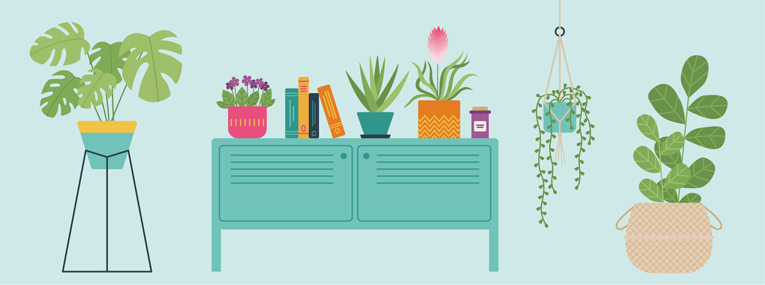
Are you a plant-lover who delights in being surrounded by beautiful, healthy plants but you’re a tad bit of forgetful plant parent or you smother your plant babies with too much love, leading to an overwatering problem? Or maybe you simply prefer plants with low maintenance needs?
Then you may want to consider growing your plants in water. Plants that grow in water take the stress and work out of caring for them. Not only do you not have to deal with soil, mulch, pH levels, drainage issues, or yearly repotting issues, but you also save massively on time and costs.
However, not all plants can grow permanently in water. To find out which plants grow best in water and how to care for them, keep reading.
Heartleaf Philodendron | Philodendron Hederaceum
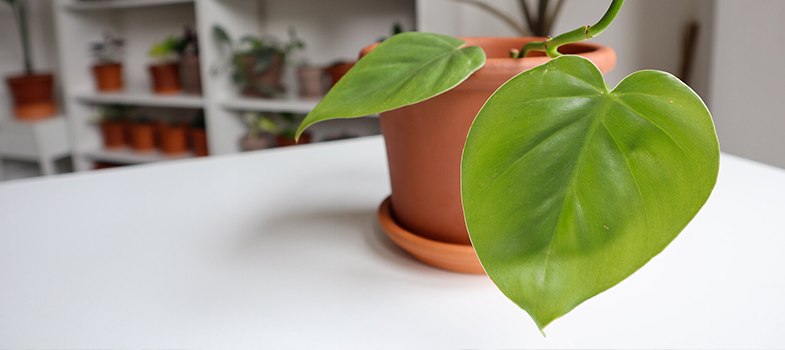
Serious question: how did the rose beat out the Heartleaf Philodendron as the plant of choice for Valentine’s Day? Okay, Heartleaf Philodendrons may not be as delicate and pretty as the rose, but their endearingly heart-shaped leaves and easygoing nature should have at least put them on the top 10 list of romantic plants.
Even the Greeks thought so. In Greek, phileo means “to love” and dendron means, well, “tree”. Okay, so not entirely romantic. But still, two out of three isn’t bad, right?
Philodendrons get their name from their tree-climbing nature. In their natural environment, they can grow up to 6 metres and their leaves as long as 30 cm; but, as an indoor plant, they grow to only 1.2 metres.
Native to the Caribbean, Mexico, and Brazil, Heartleaf Philodendrons don’t do well in temperatures below 4°C. Therefore, they are best kept in a warm indoor environment. They are evergreen plants and so keep their leaves throughout the year, which is a trait of almost all tropical plants with broad leaves.
How to Grow Heartleaf Philodendron in Water
The best way to grow a Heartleaf Philodendron in water is through stem cuttings. Transplanting it from soil to water often doesn’t work, with its roots usually not taking to the new environment.
Cut off several offshoot stalks, also known as petioles, growing from the main stem and place them in a glass container. If the offshoots have a leaf or two growing on them they will produce roots faster as the plant won’t need to split its energy between producing leaves and roots – it can just focus on growing roots.
Some people prefer to use vases with narrow necks to help keep the cuttings upright, while others like wide-necked vases and place decorative pebbles in the vase to balance the cuttings. The choice is yours.
Pour water into the vase until just above the lead nodes – also known as the lumpy bits along the stalk.
Use filtered or distilled water for best results. If you have to use tap water, let the water first sit in an open container for 24 hours to allow the chlorine to evaporate before pouring it into your glass container. However, refrain from using tap water often.
Remove any leaves drooping into the water, as they will rot, and put the container in a well-lit area but away from direct sunlight. To filter light in a room, cover the windows that receive sun with sheer curtains and place the plant several feet away from the window. Happily, Philodendrons don’t need fertiliser to grow in water and you should see roots sprouting in about 7 to 10 days.
Peace Lily | Spathiphyllum
Spoiler alert! You will fall in love with the Peace Lily. Absolutely stunning in appearance, the Peace Lily is also a generous and accommodating plant. Its bountiful foliage remains lush green throughout the year. Therefore bringing a consistently warm, tropical feel to your space all year round.
And as if that wasn’t awesome enough, Peace Lilies are also highly effective in purifying the air. A study by NASA found that the Peace Lily was one of only a handful of plants that removed all of the tested pollutants from the air. Pollutants including benzene, ammonia, and formaldehyde.
Native to the tropical forests of Venezuela and Colombia, there are over 45 different species of the Spathiphyllum. These vary in a number of small ways, including leaf length, plant height, and foliage density. However, what they all have in common is that they all produce white flowers.
Don’t worry, though, if your Peace Lily flower doesn’t turn white right away. New blooms start off green and then become white during their peak, eventually going back to green as they age. Flowers may bloom anywhere from late winter to spring. Depending on the species or cultivar, with blooms typically lasting for a month or two.
Check out Flowers Across Melbourne to purchase your very own beautiful Peace Lily. Send it as a gift for a special occasion or simply get one for your office space. Offices need love too! The folks at Flowers Across Melbourne guarantee same day delivery anywhere in Melbourne. Not to mention their customer service is second to none.
How to Grow a Peace Lily in Water
You can grow a Peace Lily in water by either transplanting it from soil or propagating it from a cutting.
To transplant your plant from soil, water it a day or two before removing it from its pot. This way the soil is more malleable but not too soggy. Then gently remove it from the pot and clear away the soil clinging to the roots with your hands.
Next step is to dip the roots in a bucket of water. Work them with your hands to remove the remaining soil attached. You can also use a jet hose to remove the last bits of soil at the top of the roots. Don’t worry – this won’t harm the plant.
Change the water in the bucket several times during this process. This way you’re not reintroducing old soil to clean roots. Once all of the earth, bugs, and other organic matter are completely removed, it’s time to place the plant in your glass container. If you’re using cuttings, make sure you cut off the stalks from the base of an established plant.
Once they are established in the water, add several layers of decorative pebbles in the container. This gives stability to the plant or cuttings and prevent from floating or sinking to the bottom. Next fill the vase with filtered or distilled water. Fill to just above root level or until half of the stem is covered. Remove leaves from the lower parts of the stem so that they are not submerged in water.
There is no need to add fertiliser, but make sure you monitor the water levels regularly. This is to prevent it from dipping below the roots. Change the water and clean the container and pebbles when you see the water beginning to change colour due to algae starting to form. This may take between three to six weeks, or even longer. Once you know how long it takes for algae to start growing in your water, try to change it a few days before to keep it from even forming at all.
Sunlight exposure
The best way to keep algae away for longer, though, is to keep your plant away from direct sunlight. Exposing your plant to indirect light will also enable its flowers to turn its iconic, eye-catching white after it blooms. Too much sun will keep the flower green throughout.
You can also try adding about 3-5 ml of sea salt to the water. Do this about once every three to four weeks. This is to keep the water fresher for longer due to salt’s antibacterial properties.
Inchplant | Tradescantia Zebrina
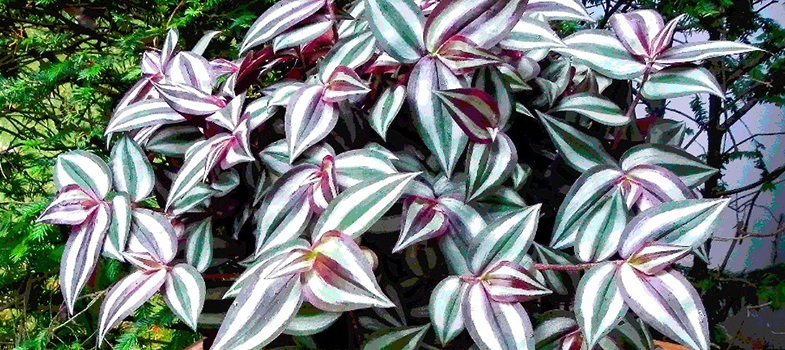
Formerly known as the Zebrina Pendula, scientifically. The Wandering Jew, commonly, the Inchplant has probably gone through as many name changes as the musician P. Diddy. Nonetheless, its beauty has remained constant throughout.
Not to be confused with the Tradescantia Fluminensis – which is also known as Inch Plant. This Inchplant is spelled with no space between the letters, and its foliage has variations of colour.
There are differing stories about where the Inchplant gets its name. Some say it’s because the plant’s leaf nodes grow 1-inch apart. Others because it’s purported to grow an inch every week. And yet others say it’s because only an inch-long cutting of the plant is needed for it to grow.
Whatever the real story is about the origins of its name. We know for sure that it originates from Central and South America. Also that it grows to about 15 cm to 23 cm in height.
Commonly producing leaves with a purple or dark green stripe down the middle. The Tradescantia Zebrina will lose its colouring and become green all over if it doesn’t receive enough indirect light.
How to Grow an Inchplant in Water
The Tradescantia Zebrina grows very well in water. All you have to do is cut off several stalks from the base of the main plant. Place the cuttings in a glass container and fill it with distilled or filtered water. Fill until the leaf nodes are covered. Remove any leaves from the lower parts of the stem that are submerged in the water. This is because they will rot and create adverse conditions for root growth.
Similar to the other plants, keep your Inchplant in a well-lit area. Particularly where it receives indirect sunlight and change the water in the container at least once a week. There is no need to add fertiliser; the roots will start inching their way out in 7 to 10 days.
Umbrella Palm | Cyperus Alternifolius
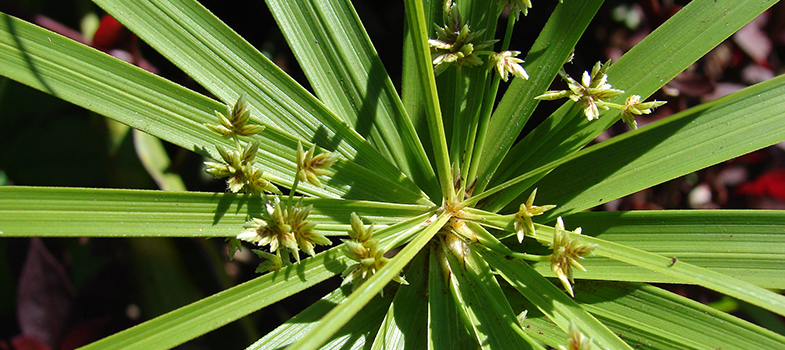
Warning: this plant may make you want to hold tiki parties, dance the hula, and sip on piña coladas throughout the year.
The quintessential good vibes plant. The Umbrella Palm, can brighten up the darkest of rooms. On Winter days with its tropical display of bright green leaves and generally sunny appearance.
Reaching heights of about 1.8 meters, it grows easily in water. In fact, relishes it. Each stem produces about 10 to 25 leaves, which spread gracefully out to about 60 to 90 cm.
The Umbrella Palm is originally found across large swatches of Sub-Saharan Africa. It is also a relative of the papyrus plant that was once used to make paper in ancient Egypt. Accordingly, it’s not a very winter hardy plant, and it does not handle frost well at all. It will most likely perish in temperatures below -6.7°C.
Well-known cultivars of the Umbrella Palm are “Gracilis’ and ‘Variegatus’. Both of which have shorter stems and leaves than the original plant. Growing to a maximum of 60cm, the ‘Gracilis’ is the smaller of the two varieties. With the ‘Variegatus’ occasionally reaching 1.2 meters.
How to Grow an Umbrella Palm in Water
When it comes to growing an Umbrella Palm in water, the plant flips things on its head – literally. You need to place the cuttings upside down in distilled water for it to grow roots.
To do so, cut off a few full-length stems from the main plant. Thicker stems are more likely to produce a stronger root system. Trim the stems to about 30 cm long. Cut off about three-quarters of its leaves, shortening them to about an inch or so. Clipping the length of the leaves prevents them from rotting once you place them upside down in the water.
Fill a glass container with water to about halfway and place the stems upside down in the water. You don’t need to add any fertilise. All you need to do is keep the vase in an area where it receives indirect sunlight. The roots will grow from the bottom of the immersed leaf head. It’s fascinating to see!
Change the water every three to four weeks and clean the container regularly to remove any algae or dead leaves.
Spider Plant | Chlorophytum Comosum
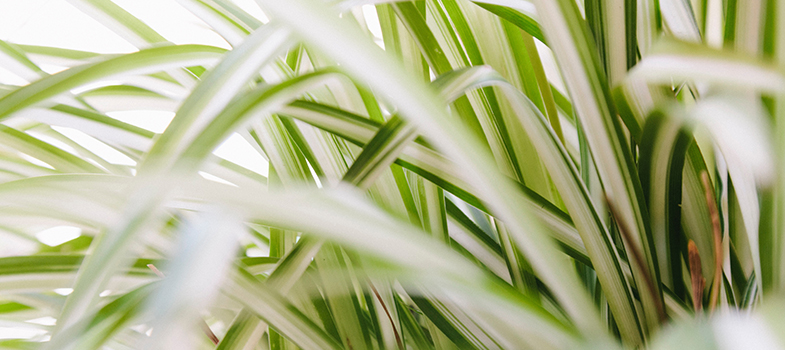
A hugely popular ornamental plant, the Spider plant is loved by gardening enthusiasts worldwide because it can grow in almost any environment and is very forgiving of absent-minded plant lovers who may forget to tend to its needs.
The only issue that the Spider plant suffers from is sensitive leaves. The tips of its leaves easily turn brown due to various reasons, including overwatering, over-fertilising, or receiving too much sunlight. This, however, can serve as an early warning sign to let you know that you need to change something about your plant care routine.
Spider plants’ leaves either have a white or yellow stripe down the middle, depending on the variety. It prefers humid conditions, which align with its origins in the coastal areas of Eastern, Southern, and Western Africa. However, it is very tolerant of almost all conditions and can grow in temperatures as low as -4 degrees Celsius.
The plant is an enthusiastic flowerer, and it will start to produce white, star-shaped flowers annually once it reaches maturity, which takes about 1 to 2 years. The flowers bloom at the tips of the plant’s stems, with blooms lasting for a few weeks, after which “Spider Babies” – smaller, spindly leaves – grow from the same location. The babies hang off the ends of the stems like spiders in a web and can be cut from the main plant and used to grow a new Spider plant.
How to Grow the Spider Plant in Water
The best way to grow a Spider plant in water is to use its Spider Babies, which actually grow faster in water than in soil. All you have to do is place several Spider Babies in a clear container filled with non-chlorinated water, and they will start to grow roots after about 7 to 10 days.
Change the water and clean the vase when you notice any algae beginning to form, which may take anywhere between three to six weeks and sometimes even longer. Also, be sure to top up the water so that it doesn’t drop below the root level.
Pothos | Epipremnum Aureum
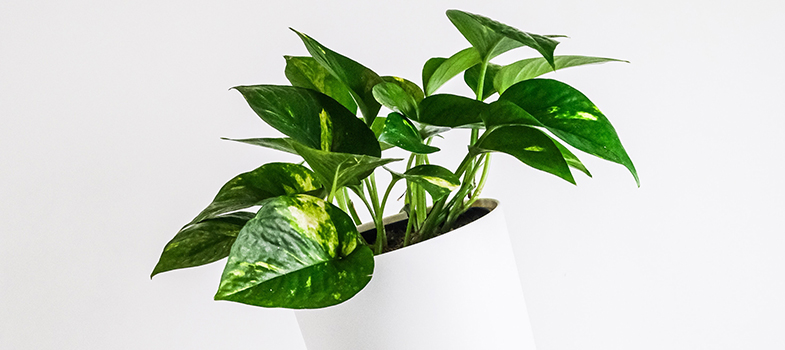
With large leaves and long stems, the Pothos plant is a climbing vine that may take a little bit of coaxing to grow in water; but if you’re someone who likes to roll up their sleeves and get a little bit dirty – only figuratively of course as there is no soil involved – then this is the plant for you.
Named after the Greek word for longing or yearning, most likely inspired by how it climbs and clings onto tree trunks as it grows in its native environment, the Pothos plant is believed to have been initially found in the Solomon Islands.
As a tropical plant, Pothos grow well in temperatures between 21°C to 32°C, but they can tolerate temperatures as low as -1 degrees Celsius. In its natural habitat, its leaves can grow up to 2 to 3 feet long; however, when grown indoors, the leaves usually reach a maximum length of about 6 inches.
There are only two known types of Pothos: the Golden Pothos, which has smooth and shiny yellow-green leaves, and the Marble Queen, which has white-green leaves. Because it rarely flowers, even in its natural habitat, it’s been almost impossible to produce hybrids of the Pothos.
How to Grow Pothos in Water
You can either transplant Pothos from soil to water or grow it directly in water from a stem cutting. To transfer it to water, make sure you gently and completely remove all the soil from the roots of the Pothos before placing it in a glass vase. If growing it from stem cuttings, choose a long stem that has at least two leaves growing on it and cut it off from its base.
Pothos are not big fans of direct sunlight. So it’s best to place the vase in an area where the plant or cuttings receive the sun, but through a window covering. The cuttings will start to grow roots after two to three weeks at which point you may need to start adding organic liquid plant food or fertiliser to the water to help the plant continue to grow.
It is better to err on the side of too little fertiliser than too much, so only a few drops one a month will be enough to provide the plant with the nutrients it needs. With the use of fertiliser, you may need to change the water more often than with other plants due to faster algae growth and the accumulation of nitrates in the water. Therefore, keep a close eye on your Pothos.
Aluminum Plant | Pilea Cadierei
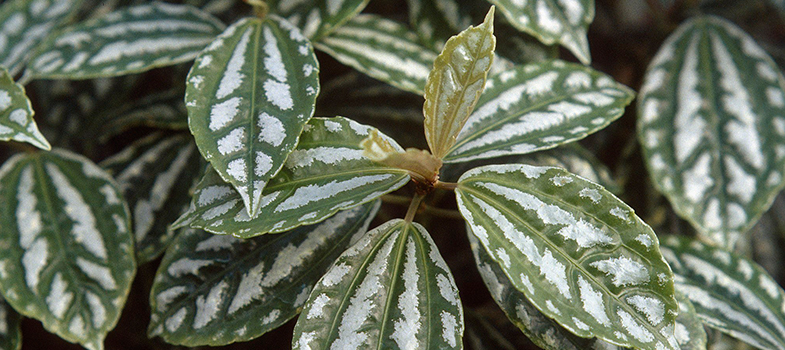
The vivid green foliage and patterned leaves of the Aluminum Plant stands out beautifully in an indoor setting. Native to Vietnam and China, the Aluminum plant gets its name from the perfectly arranged silver strokes of colour on its leaves that look as though someone with relatively steady hands dripped aluminium on it.
Given its rainforest origins, this plant thrives in areas with low light and high humidity. It can’t handle temperatures lower than 4.4°C and so, considering that it grows to an average height of only 30cm, it makes the perfect plant for your bathroom.
The Aluminum plant regularly produces a small cluster of pinkish-white flowers during the summer. As a result, horticulturists have been able to develop a cultivar from it called ‘Minima’. Bred to grow up to only 10 to 15 cm, the ‘Minima’ makes a lovely, low-key addition to the kitchen.
How to Grow the Aluminum Plant in Water
Cut off several offshoots from the main stem and place them in a glass container with water. Make sure that you cut off the whole offshoot, including the stalk, and not just the leaf. The roots should start to grow after about two weeks.
Most people tend to add liquid plant food, vitamins, or fertiliser to their Aluminum Plant at this stage to provide additional nutrients and encourage growth. However, it may not need it. Observe its progress over four to six weeks – making sure to keep it out of direct sunlight – before deciding whether to add supplementary nutrients or not.
If you notice that your plant is growing well without any extra help, leave it be. Just make sure that you regularly top up the water in the vase as needed. The water shouldn’t drop below root level. Keep an eye on the colour and volume of water and change it every month to introduce a fresh boost of oxygen to the plant and to reduce the accumulation of plant vitamins (if you choose to use them) and algae in the water.
Each time you change the water, make sure to clean the container and remove any dead leaves from the water. Scrub the vase with an organic product, such as baking soda, and also clean the roots if you notice any algae clinging to them.
Lucky Bamboo | Dracaena Sanderiana
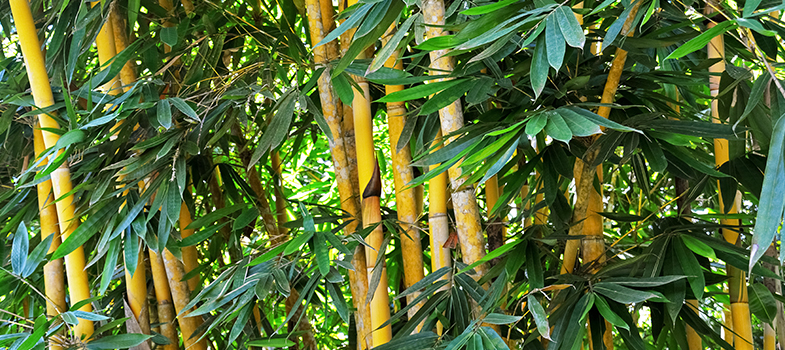
The Lucky Bamboo is a simple and unassuming plant-next-door that skyrocketed to fame in Asia’s ornamental gardening industry.
Originally found in Cameroon, Gabon, Central African Republic, the Republic of the Congo, Angola, and the Democratic Republic of Congo, most of the Lucky Bamboo sold around the world today is now grown in China and Taiwan.
It is thought to bring luck, fortune, and good health and is one of the most sought-after plants for feng shui. According to the feng shui principles, the number of bamboo stalks in the pot determines the luck associated with it.
One stalk is said to represent good fortune, two for love, three for happiness, wealth, and long life… and the list goes on, with some arrangements containing as many as twenty-one stalks in one plant. However, never four, fourteen, or twenty-four stalks, as the number four represents bad luck in Chinese culture.
Nowadays, growers have taken things several notches higher by braiding and weaving stalks together to form decorative shapes, such as hearts, trellises, and feng shui wheels to make the plant even more attractive to customers.
Interestingly, although this plant is commonly referred to as a bamboo, it is more of a herb and its leaves contain high levels of natural antioxidants. Lucky Bamboos take about 2 to 3 years to grow to their maximum height of 1.5 meters, and they prefer temperatures between -1°C and 16°C or higher.
If you have a cat, keep your Lucky Bamboo where they can’t easily get to it because it can be toxic to them. If ingested, they may experience drooling, vomiting, or depression.
How to Grow the Lucky Bamboo in Water
The Lucky Bamboo is one of the easiest plants to grow in water. Many shops nowadays have them already planted in water. In that case, all you have to do is top up the water regularly or change it every three weeks or so while monitoring the plant’s growth.
If growing the Lucky Bamboo from a plant cutting, snip off the entire length of the stalk. Try to include a leaf joint in your cuttings because they will develop stronger root systems. When adding water to the vase, make sure it covers the leaf nodes and joints.
You don’t need to add fertiliser; the roots will grow in about 3 to 4 weeks just fine without it. For good growth, position the container in an area where it receives indirect light and change the water regularly, making sure to also clean the vessel.
The roots should be a red or brown colour. If they turn black, it may be due to the quality of the water. So cut off the back roots and change the water in the container. If you were using tap water, use distilled or spring water.
A change in leaf colour from green to yellow or brown can also indicate a problem with water quality or that the plant is receiving too much light. After removing the affected leaves, change the water and location of the plant and check for improvement.
Chinese Evergreen | Aglaonema Commutatum
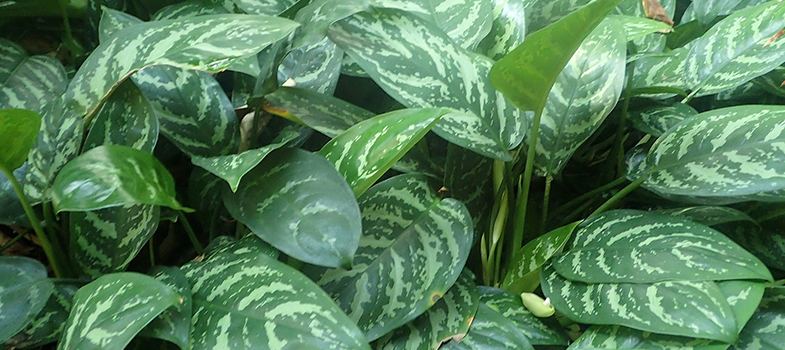
A bold and eye-catching plant that seems to complement almost every interior décor, the Chinese Evergreen is a great choice for livening up an indoor space.
While there are hundreds of Aglaonema varieties and cultivars available, differing in colour, size, stripe pattern, and foliage density, the Chinese Evergreen is quite distinguishable with its striking silver-green V-shaped pattern on its leaves.
As an indoor plant, it typically grows to about 0.5 metres tall and wide, which can take between 3 to 5 years. Originally found in the Philippines, Indonesia, and parts of China, the Chinese Evergreen prefers humid temperatures that don’t fall below -1°C.
How to Grow the Chinese Evergreen in Water
Chinese Evergreens are commonly grown in water through plant cuttings. All you have to do is select a thick stalk on an established Chinese Evergreen and cut it off from its base. Place the cutting in a clear vase, and fill it with filtered or distilled water until the leaf nodes are covered.
Put the vase in an area where it only receives indirect light, and the roots should start growing in about two to three weeks. There’s no need to add fertiliser, simply top up the water when it falls below the root level and change the water when you start to see hints of algae forming.
Growing plants in water is a great alternative for plant lovers looking for a low-cost, timesaving, and worry-free way of maintaining their indoor plants. Not only are water plants easy to grow and care for, but they also add a sense of style and elegance to a space that will have people complimenting your brilliant sense of decor.
Check out the Blog for more advice on growing and caring for your indoor plants and to shop for an even wider variety of beautiful green gifts at a great price.



Comments are closed.